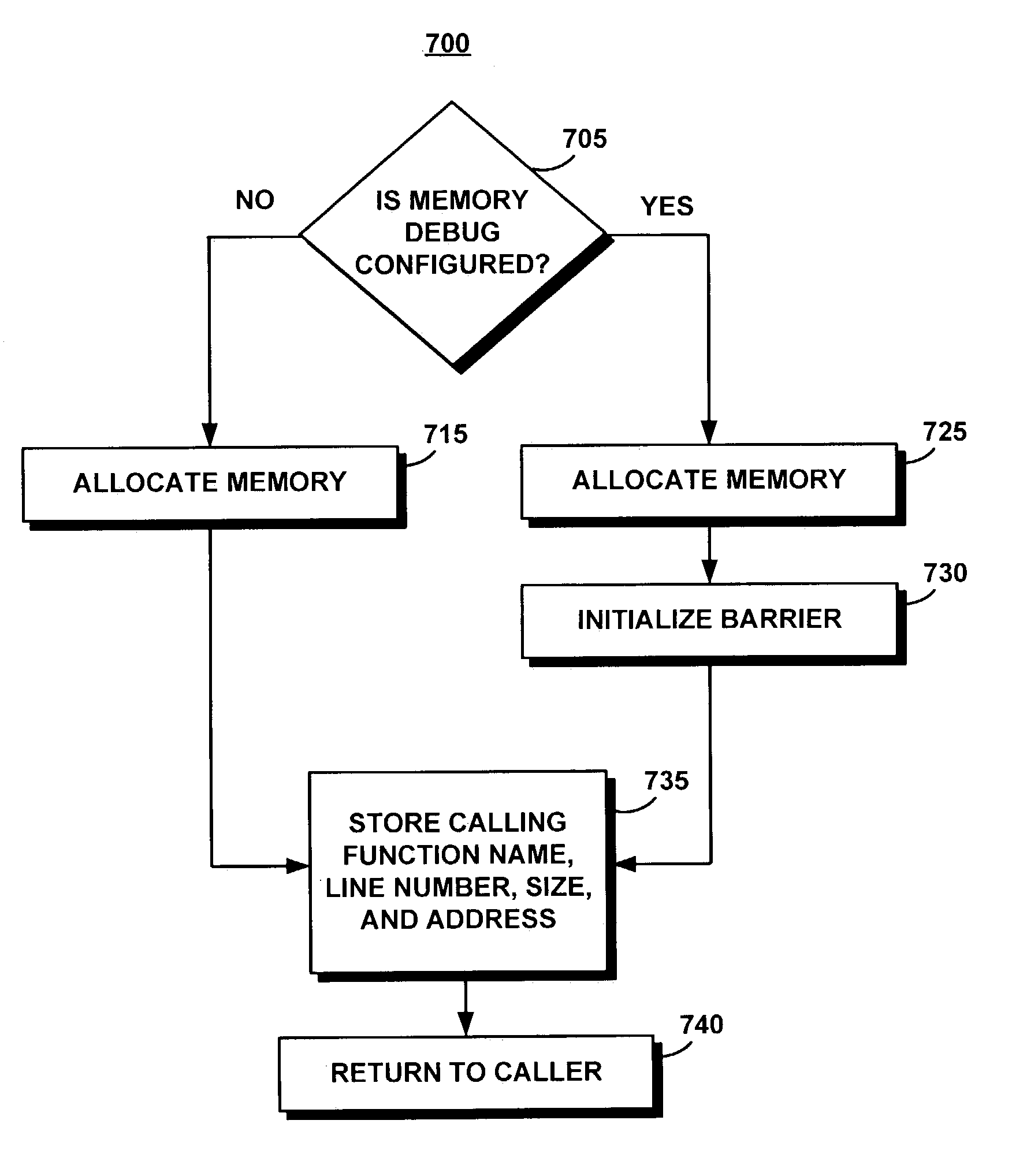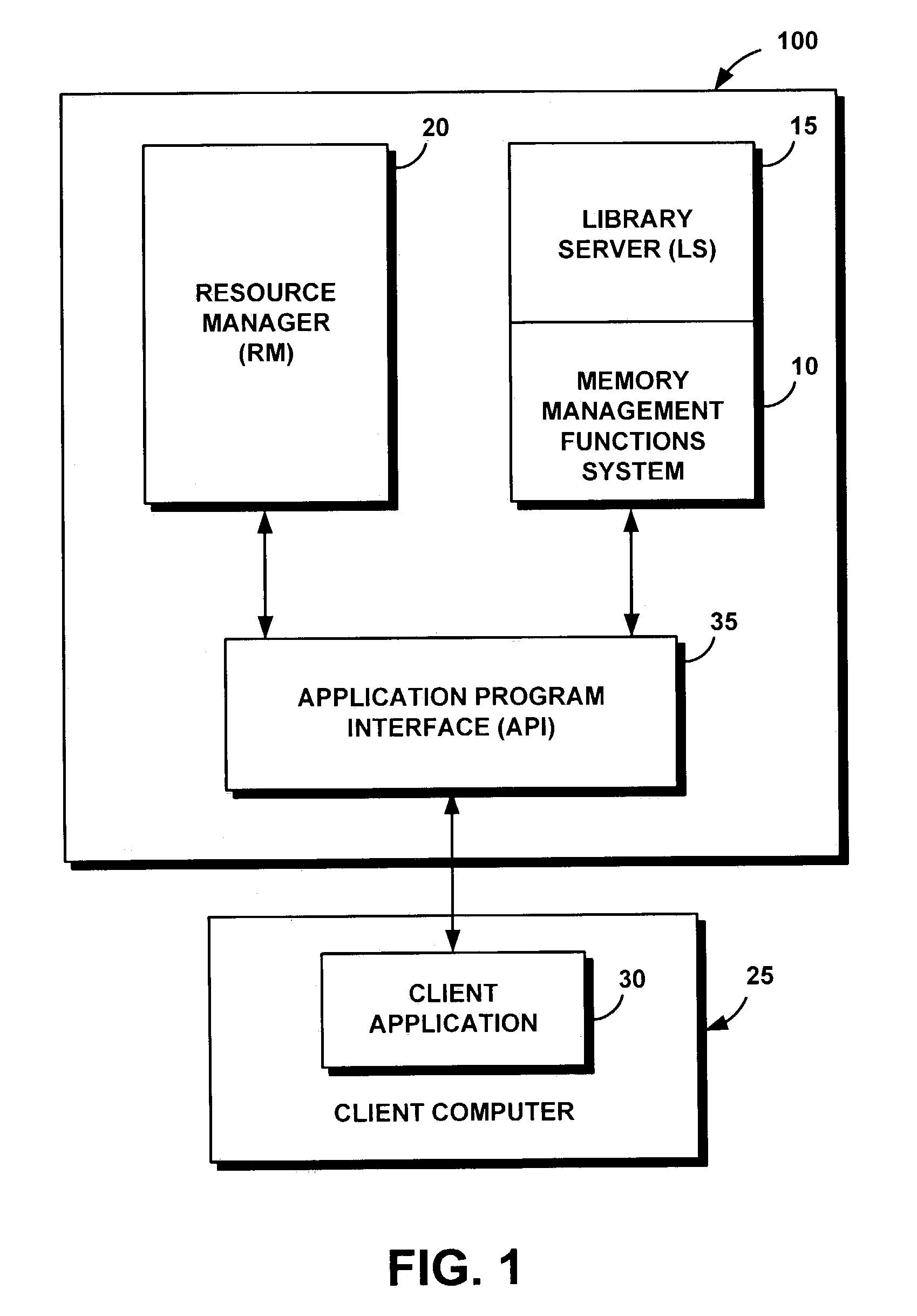System and method for detecting memory management programming errors
a memory management and programming error technology, applied in error detection/correction, instruments, computing, etc., can solve problems such as memory leakage or ever-increasing use, application malfunction or failure, and affect the performance of other applications on the computer, so as to reduce processing time and improve memory location performance
- Summary
- Abstract
- Description
- Claims
- Application Information
AI Technical Summary
Benefits of technology
Problems solved by technology
Method used
Image
Examples
Embodiment Construction
[0037]The following definitions and explanations provide background information pertaining to the technical field of the present invention, and are intended to facilitate the understanding of the present invention without limiting its scope:
[0038]API: Application Program Interface, a language and message format used by an application program to communicate with the operating system or some other control program such as a database management system (DBMS) or communications protocol.
[0039]C / C++: C is a high-level programming language that is able to manipulate the computer at a low level like assembly language. C++ is an object-oriented version of C that has been widely used to develop enterprise and commercial applications. C and C++ are written as a series of functions that call each other for processing. The body of the program is a function named “main.” Functions are flexible, allowing programmers to choose from the standard library that comes with the compiler, to use third part...
PUM
 Login to View More
Login to View More Abstract
Description
Claims
Application Information
 Login to View More
Login to View More - R&D
- Intellectual Property
- Life Sciences
- Materials
- Tech Scout
- Unparalleled Data Quality
- Higher Quality Content
- 60% Fewer Hallucinations
Browse by: Latest US Patents, China's latest patents, Technical Efficacy Thesaurus, Application Domain, Technology Topic, Popular Technical Reports.
© 2025 PatSnap. All rights reserved.Legal|Privacy policy|Modern Slavery Act Transparency Statement|Sitemap|About US| Contact US: help@patsnap.com



